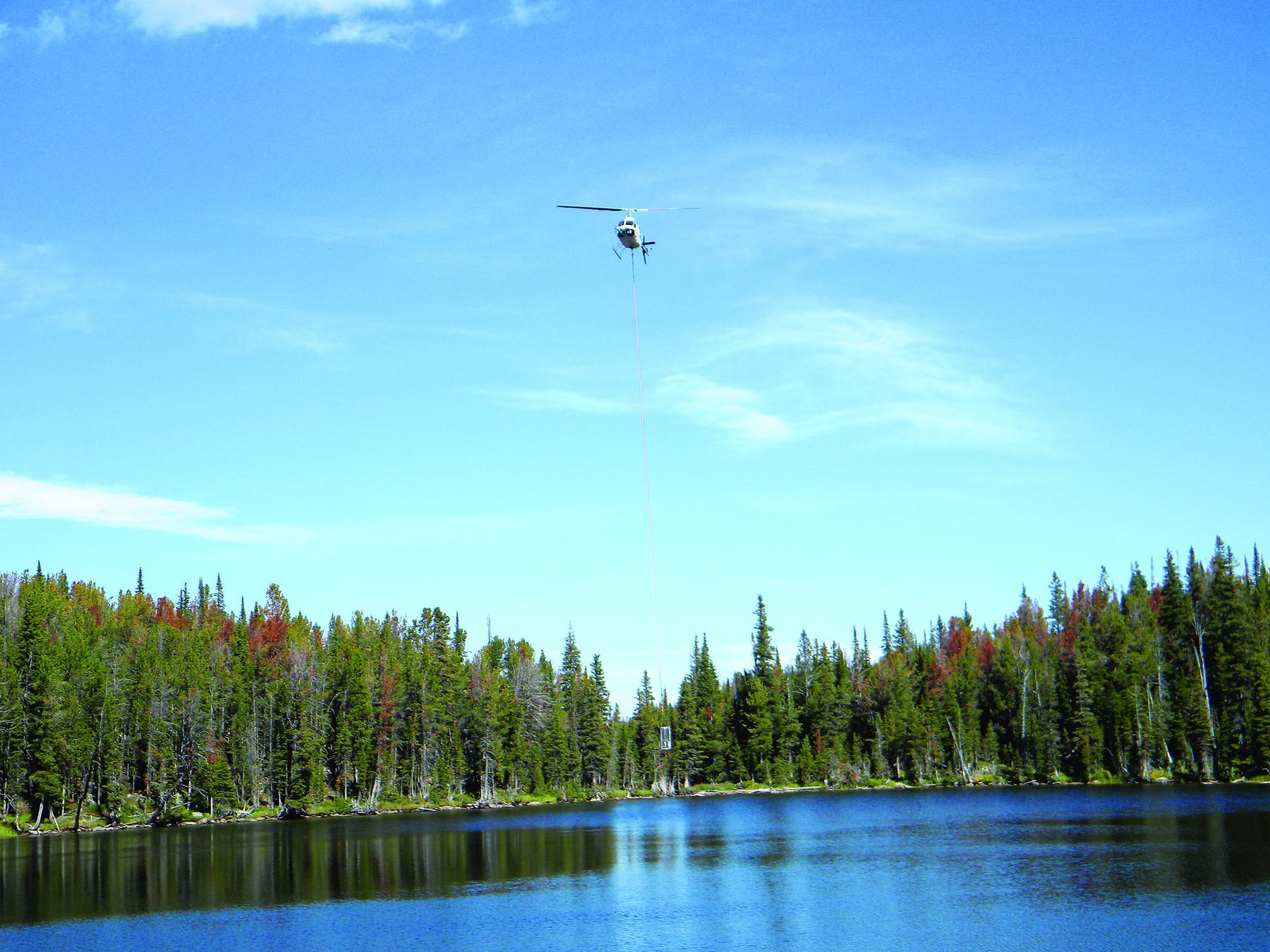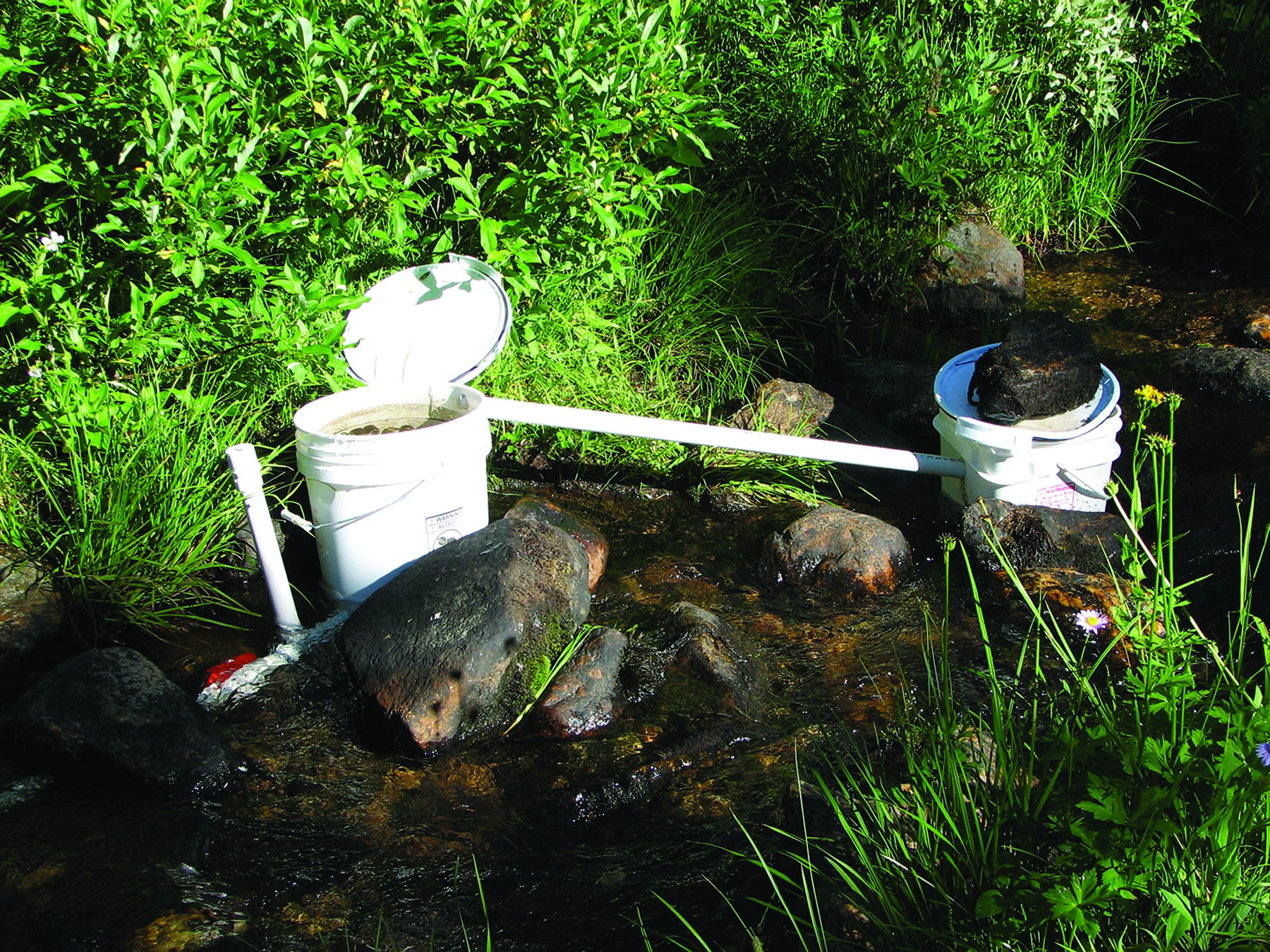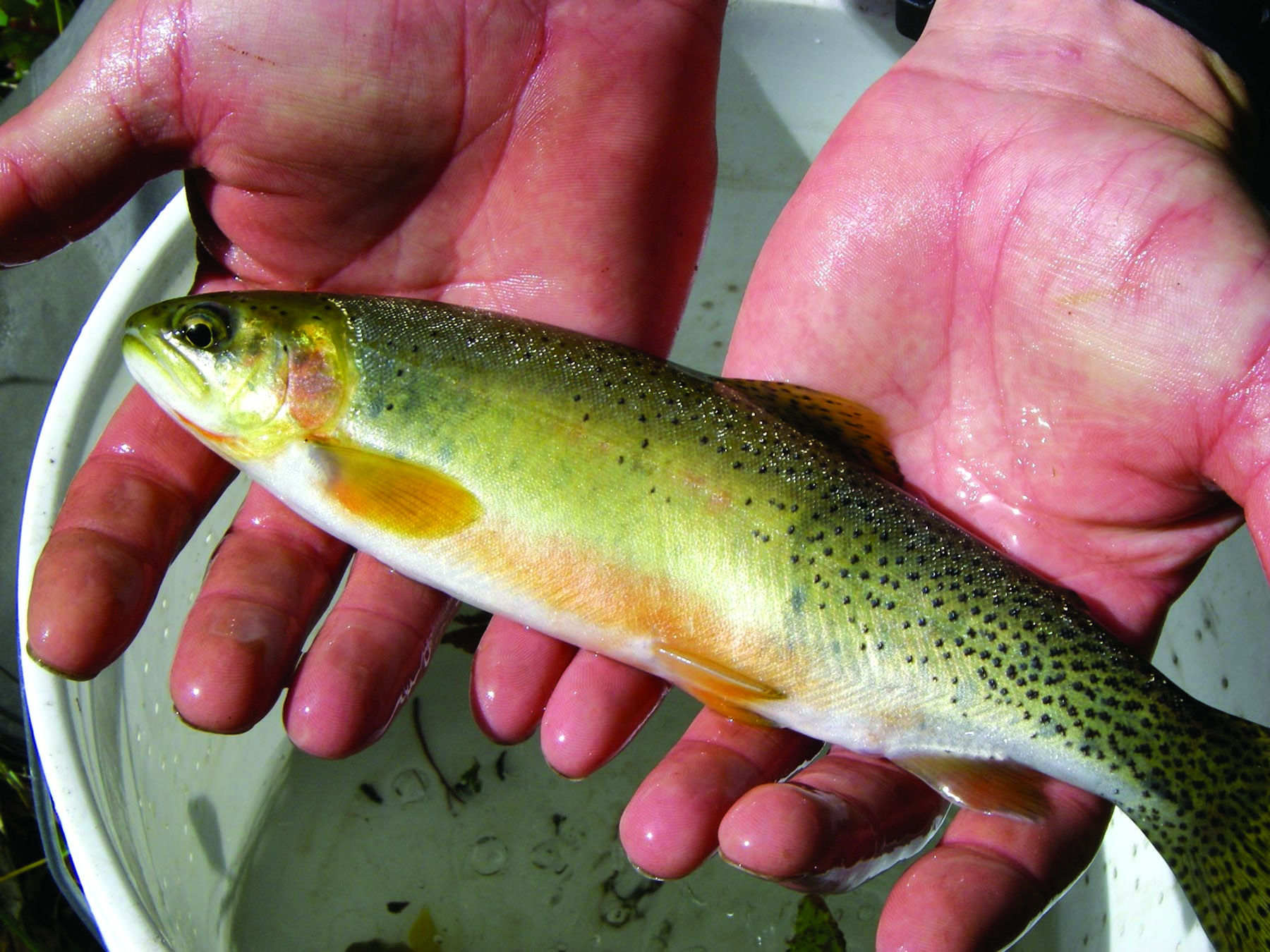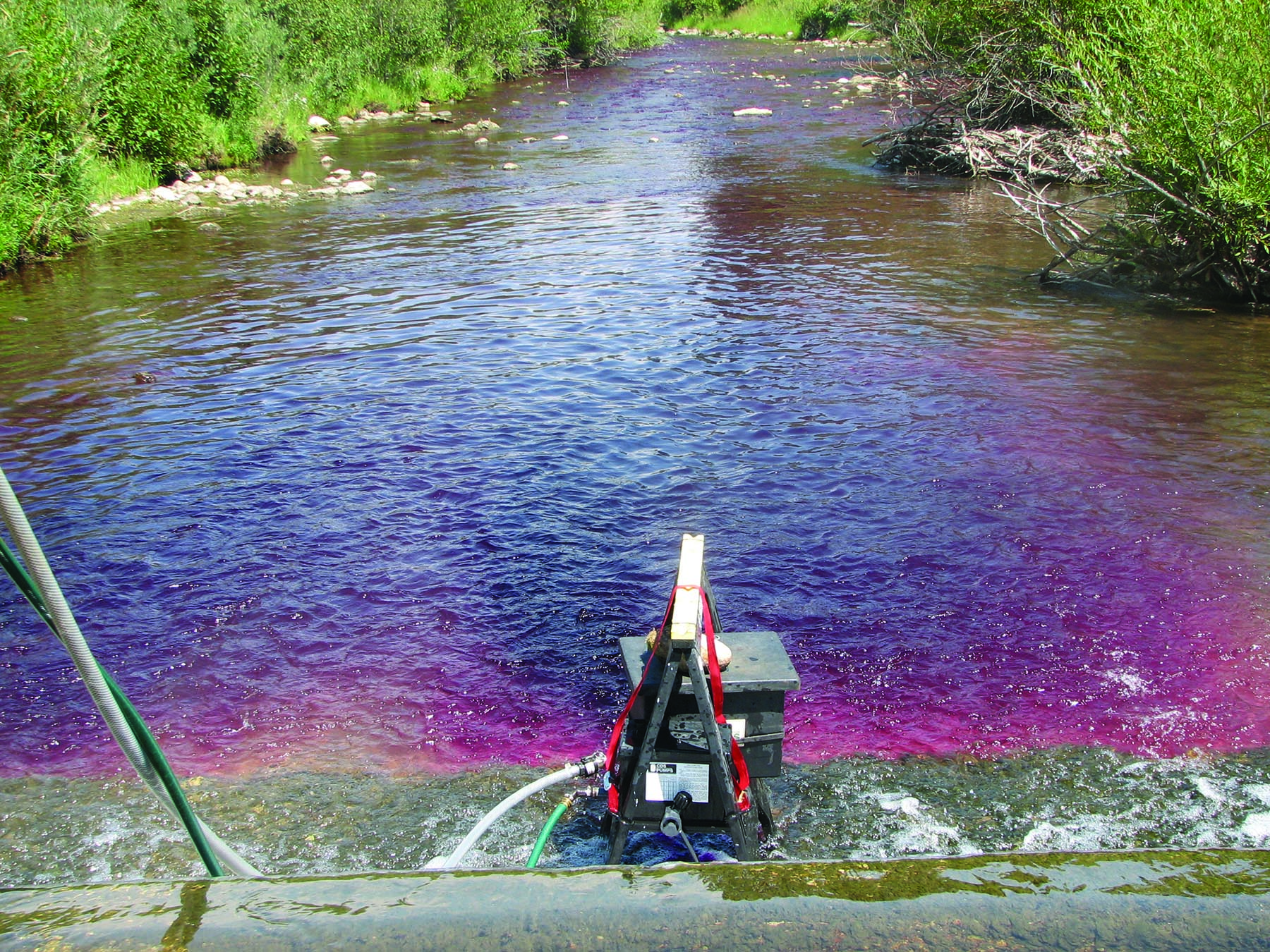
24 Aug Images of the West: Cherry Creek Revisited
A CLEAR, CRISP DAY, A BREEZE against the skin, the gurgle of moving water, then, the flip of a tail, the eye catches the silvery flash of a shiny, slick, speckled body that rolls and disappears. This moment on Cherry Creek comes after the completion of a decade-long project to rehabilitate the Westslope cutthroat trout, a native species that had been bullied out by larger non-native species. The Cherry Creek Westslope cutthroat trout restoration project was a mixture of trials, conflict, hiccups, controversy and, ultimately, success. Like all things in nature, it was not simple.
The challenges for the Westslope cutthroat trout have been well documented. Competition from non-native species — including brook trout and Yellowstone cutthroat trout that were introduced by humans into Cherry Lake back in the early 1900s — put the Westslope in bad shape and resulted in a listing as a “species of concern” by Montana. Recognizing the scale of the problem, Montana Fish, Wildlife and Parks (FWP) created a program to try to restore the core population of the Westslope in hopes that the species would migrate and expand into the Madison River, providing anglers with opportunities to fish. It was a two-fold deal: The trout had to be isolated so they could survive, spawn and migrate downstream into the river and be available for anglers, according to Montana FWP fisheries biologist Pat Clancey.
Thus began the Westslope cut- throat trout conservation and restoration project — a large-scale restoration of 60 miles of occupied habitat that would be tackled in four phases. The goal was to restore genetically pure Westslope cutthroat trout to the Madison drainage.
Ted Turner approached Montana FWP and asked how he could help, according to Clancey. A partnership was formed and Turner Enterprises footed much of the bill for the project and allowed access to a large section of Cherry Creek on Turner’s Flying D Ranch. Turner wanted to help with on-the-ground efforts because the project was in line with the work of the Turner Endangered Species Fund, formed in 1997 for the purpose of “conserving biodiversity by ensuring the persistence of wildlife species and their habitats.”
As the project was ramping up in the fall of 1997, the plan was to remove non-native species by applying a chemical — an EPA-registered piscicide (fish pesticide), rotenone or antimycin — to sections of the stream in order to kill off existing fish. The chemical would be applied systematically and the team would strategically move up the watershed to the headwaters. Once that was completed, the creek would be restocked with Westslope cutthroat trout eggs.
Trout Unlimited “enthusiastically supported” the project. The Gallatin National Forest also had a role in this public and private partnership.
“The natural heritage in Montana means a lot to people,” Clancey said. “Westslope cutthroat trout were the first trout Lewis and Clark described when they came through this area.”
But all were not convinced. Opponents surfaced, lawsuits were filed and the project was halted before it began. Even prior to the lawsuits, Ted Turner stopped the project in order to get more details on the process. The lawsuits were filed against Montana FWP but Turner’s involvement in the project seemed to be a lightning rod for skeptics.
Those against the project were concerned about water quality safety and claimed the project violated the Clean Water Act. Some say the lawsuits were fueled by a deeper issue — that the public would not have access to most of the restoration area since much of it was on private land. The extensive nature of the project drew strong public criticism that devolved into well publicized legal disputes.
“The lawsuits were fairly frivolous,” said Bruce Farling, executive director of Montana Trout Unlimited. “I believe it came down to two rationales: People had issues with access to the fishery and some people did not believe in the fact that in order to save fish we had to kill some fish. I do believe there are a handful of people that just had a problem with Ted Turner. Turner has a reputation in this state — practically all of it is unfair.”
“Westslope cutthroat trout in the upper Missouri River drainage are part of the cultural heritage of this state that dates back to the days when Native Americans tribes were fishing for them. To just watch them disappearing dramatically made me queasy,” Farling said.
Ultimately, the courts ruled in favor of Montana FWP. After a four-year halt, the project was back on. In 2003, the Cherry Creek Native Fish Introduction project began. It covered more than 60 miles of stream habitat, the 7-acre Cherry Lake, and included all of the Cherry Creek drainage upstream of a 25-foot waterfall, approximately eight miles upstream of the Madison River confluence. The only fish species present in the project area in 2003 were brook trout, rainbow trout and Yellowstone cutthroat trout.
Each phase was treated with fish toxicants for at least two consecutive years. Chemical treatments to eradicate non-native fish were completed in 2010, and Westslope cutthroat trout introductions began. Some 40,000 eggs with four different genetic strains of Westslope cutthroat trout and some live, young fish were used to restock the creek.
The project cost approximately $1.4 million, of which Turner covered about 80 percent. He has also contributed to the ongoing research work, which brings the bottom line closer to $2 million.
The initial legal hurdles were not the only rough spots with the project. In one phase, the piscicides reacted differently and there was an overkill of fish that went further downstream into a section that was never intended to be treated. All involved were “very disappointed and upset” that it happened, said Carter Kruse, the aquatic resource coordinator with Turner Enterprises, Inc. and the Turner Endangered Species Fund.
Since 2012, the group has been monitoring the recovery. By all accounts, the Westslope cutthroat trout are filling out and, since 2009, there is documented natural reproduction in the upper areas. According to Kruse, a conservative estimate of 25,000 to 30,000 Westslope cutthroat trout are now thriving in the Cherry Creek drainage system again.
“There is no doubt they should migrate out to that lower river,” Farling said. “Whether they stay there is another question. These are travelling fish. The Westslope cutthroat trout is genetically imprinted to move around. They may not stay in the river if it is a hostile environment. We had 80-degree water temperatures last year in the Madison River. That is bad for all trout.”
When it comes to the overall project, Kruse sees a huge benefit in the public and private partnership that drove the operation. “This started as a collaborative effort and it was one of the strongest I have been involved in. … Beyond the accomplishment of the restoration was the experimental framework that we used. We had graduate students and professionals working together. It helped train the next generation of professionals. That continues today,” he explained.
“The scientific value in preserving these fish is huge,” Farling said. “Westslope cutthroat trout evolved in these habitats over millions of years. They are genetically adapted to this area. They are resistant to fire, flood and drought. Especially in the face of climate change, we need these fish to be here.”
This was the largest renovation project ever undertaken for Westslope cutthroat trout conservation. As for Turner, the long, arduous process did not sour him on the mission. Efforts to restore or conserve cutthroat trout are underway in eight streams on four Turner ranches.
“I think Mr. Turner is just very motivated to do the right thing by the ecosystem and landscape and wants them as native and fully functional as possible,” Kruse said. “In my opinion, he has a deep emotional connection to the land. He has a love of fly fishing so, sure, that is probably part of it. But as I watch his approach, I really think it is an emotional, gut-level reaction.”
“This project could not have come off without Ted Turner’s involvement and his people. Carter Kruse is a top-notch fish biologist,” Farling said. “The fears people had have been allayed by the results. Overall, it was very, very successful.”
“Frankly, anybody who cares about trout owes a debt of gratitude to Ted Turner for wanting to do this and chipping in to make it happen. People say, oh those guys [at Trout Unlimited] get money from him so that’s why they support it. We don’t get money from Ted Turner,” Farling added.
“We just added 60 miles of connected wild habitat for the Westslope cutthroat trout in their historical range. This is a major, major increase for them,” Farling said. “We tested some things here and did some research and from a reintroduction aspect we learned things from this project we can use elsewhere. We learned the best Westslope cutthroat trout genetic makeup to use to restock. We now have a good egg or fish source for reintroducing to other areas in the Madison drainage. That is pretty important stuff.”
In the end, even with all the bends in the stream, this is the tale of Montana’s state fish, the Westslope cutthroat trout, and the men who fight for its survival.
- Turner summer employees monitor movement of tagged Westslope cutthroat trout in Cherry Creek. A portion of the fish are captured and tagged each year to monitor movement, growth, fitness and survival.










No Comments